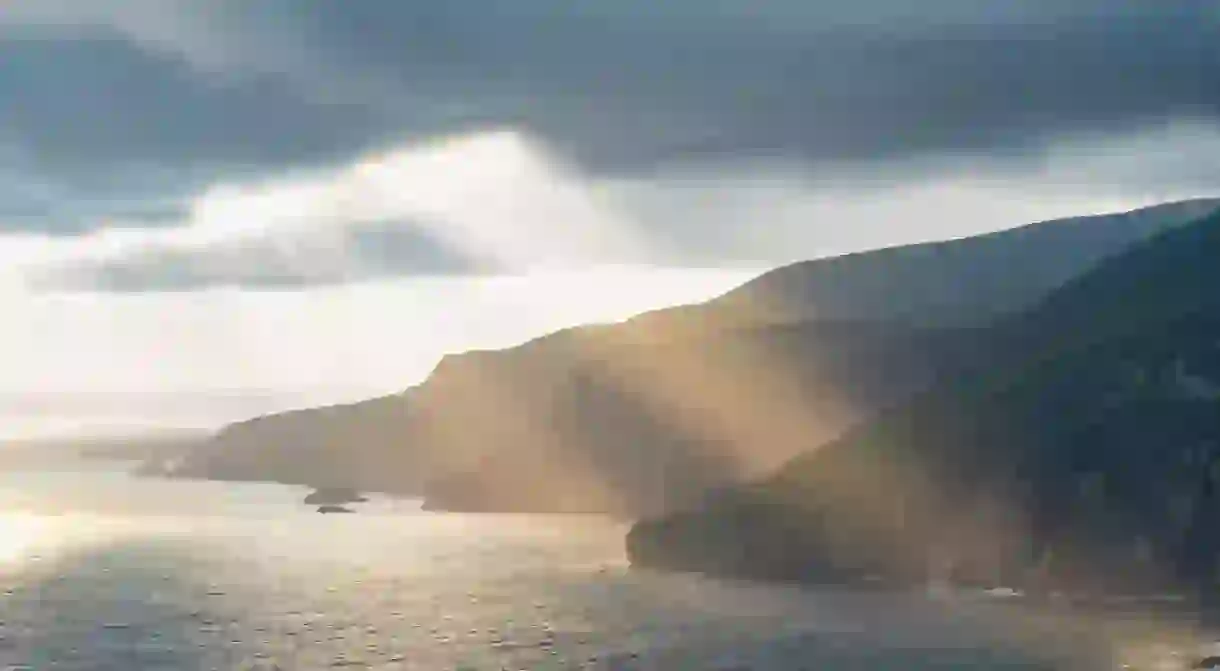The Best Things to Do in Donegal, Ireland

A trip to Donegal, in northwest Ireland, encourages you to reconnect with nature and dive deep into history. With its remote mountain passes, glass-like lakes, rugged headlands, promontories and peninsulas, Donegal must be seen to be believed. One-third of the county is Irish speaking, and its rich heritage attracts adventure seekers, hikers and history lovers from across the globe.
Hike around Glenveagh National Park
Natural Feature

The pride and joy of County Donegal, Glenveagh National Park was a private sporting estate before the Irish nation acquired it in the 1970s and ’80s. It boasts Ireland’s largest herd of red deer, magnificent mountains, pristine lakes, glens and woods, and you can explore it all across its array of hikes that are suitable for all fitness levels. The castle, which has hosted many famous guests over the years, including Marilyn Monroe and John Wayne, is a must-visit.
Kayak around the Arranmore coastline
Natural Feature
The waters of Arranmore, the largest of Donegal’s islands, offer a unique way to marvel in the all-encompassing scenery that the county is so famous for. The coastline features hidden caves and plenty of sea arches ready for exploring, and you may see seals, dolphins, basking sharks, porpoises, otters and plenty of sea birds. Just keep in mind that the weather along the west coast can be unpredictable at the best of times, so be prepared.
Letterkenny Cathedral Quarter
Historical Landmark
A town steeped in rich Irish history, the fascinating Letterkenny boasts connections with famous literary figures such as Jane Austen, whose niece is buried in a church cemetery above Church Lane. It’s also home to numerous local eateries, plush hotels, bars, shops and historical landmarks, and now, it’s possible to explore the Cathedral Quarter via an app. Simply download the Heritage Map App onto your mobile and wander through 20 points of interest around the area at your leisure.
Discover historic sites around Inishowen peninsula
Natural Feature, Architectural Landmark

At Ireland’s most northerly point, this dramatic peninsula is strewn with ancient sites, such as Grianán Ailigh, and monuments, including prehistoric burial chambers and rock art, Celtic crosses, forts and the ruins of several castles. You can explore it all in one very fascinating day. It’s also been a place of inspiration for many over the years – Amazing Grace was written by John Newton after he took refuge near Buncrana on the Inishowen peninsula in 1748, having survived a shipwreck.
Learn about traditional Irish culture at Glencolmcille Folk Village
Historical Landmark
In southwest Donegal, the Glencolmcille (Glencolumbkille) Folk Village is home to a small group of replica cottages, or a clachan, where you can experience life as it was in the 1700s, 1800s and 1900s. Here, you can discover how our Irish ancestors lived and cooked and learn about the beds they slept on, the tools they used and their means of lighting and heat. Afterwards, you can enjoy afternoon tea at its on-site teahouse and peruse the craft shop to pick up locally made arts and crafts.
Cycle around the Donegal coast
Natural Feature
With its varied mix of coastal and highland landscapes, hopping on a bike is the best way to explore the Donegal coast while burning off all those indulgent Irish stews. Kicking off in Donegal Town, the main cycle route is approximately 200km (124mi), but there’s still plenty of shorter sections where you’ll pass through various landscapes, including the hedgerow-lined roads of agricultural lowlands and towering cliffs with their sprawling vistas.
Take in views of the Atlantic Ocean from Fanad Lighthouse, Fanad peninsula
Historical Landmark
It’s not hard to see why the Fanad Lighthouse, a highlight on the Wild Atlantic Way, has been voted one of the most beautiful lighthouses in the world. Climb to the top to take in spectacular views of the Atlantic Ocean, and if you’re lucky, you might be able to spot whales, porpoises and dolphins. If you’re interested in a little history, its tours can teach you about its former light-keepers and light and aids to navigation past and present.













